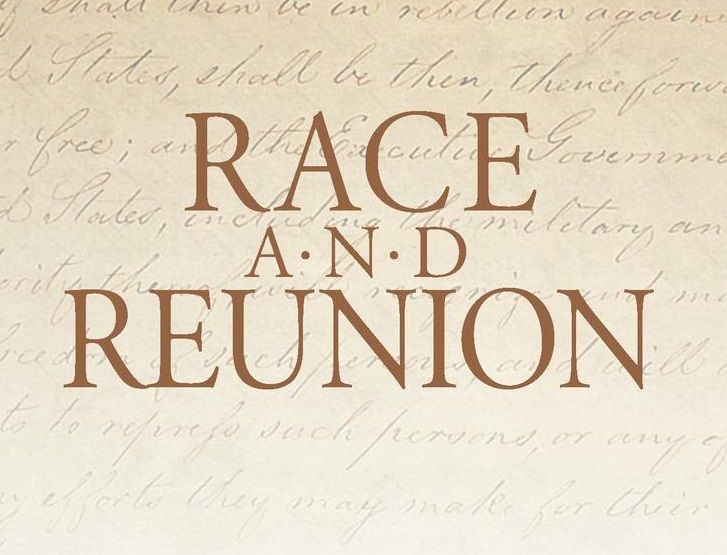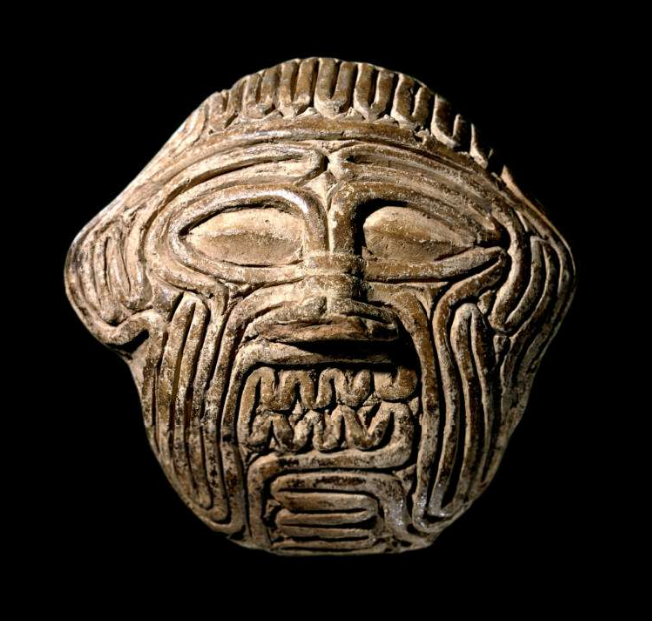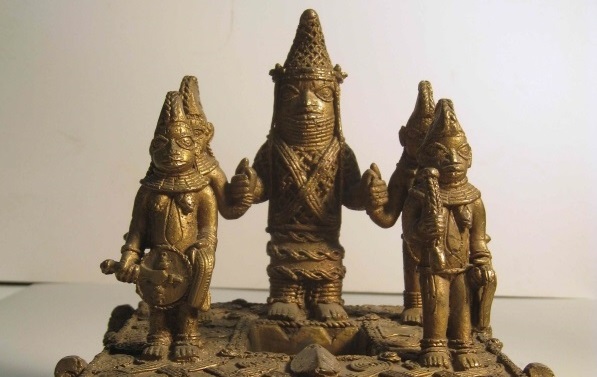History and Amnesia: Reflections on David Blight’s “Race and Reunion: the Civil War in American Memory” (Harvard University Press, 2001)
by David McKee
“You starved us. You made us eat rats.” This remark, made less than a decade ago, was uttered by a resident of Vicksburg in Mississippi to the Massachusetts-born travel writer Paul Theroux (Theroux 2016: 110). The Mississippian was referring to the siege of Vicksburg of 1863, a century and a half in the past. Folk memories of the American Civil War run deep and have endured in the hearts of the American people. Blight argues that people need a “usable past… a positive history with which to build self-respect” (362). He identifies three groups at the end of the Civil War: the Northern whites, the Southern whites and the African-Americans.1 Blight tells the story of how these three groups jostled and contended with each other in the half-century after the war’s end, as each sought its own usable past.
In this article, I aim to explore the concept of amnesia in history: how people forget or are made to forget some aspects of the past and remember others. It has been much discussed in recent years. Jasanoff, Higgins, and Smith and Grey are good examples in the context of a critique of British imperialism; Clarke and Wilson in the context of Scottish nationalism. To do this, I will look at David Blight’s 2001 book Race and Reunion: the Civil War in American Memory. Blight’s text examines how Americans came to terms with the American Civil War, and what part amnesia played in their deliberations.

Image: The 2001 edition dust cover image for David W. Blight’s Race and Reunion. In the background the top image of an extract of a document in handwritten text fades into the bottom image of a rural setting, all in sepia tone. The text in the image reads Race and Reuinion in brown lettering, within the subtitle The Civil War in American Memory in white below this.
At the end of the war, the dominant narrative was emancipationist: the North wanted to end slavery, the South resisted and attempted to secede by armed force, but the North won. At the same time, however, everyone had to come to terms with the vast numbers of the war dead, which required a different narrative. The Civil War killed almost as many Americans as all America’s foreign wars put together (64). Rage mingled with grief. It is striking how little rage North and South directed towards each other. The North aimed its rage at Britain (which Blight does not describe), to the point of threatening war (Bingham 2005). Southern rage was directed at the newly freed slaves. Armed vigilantes, the Ku Klux Klan, terrorised African-Americans in a sustained campaign to ensure that they remained effectively disenfranchised. Washington and the North chose to turn a blind eye. By the century’s end, it was estimated that 60,000 African-Americans had been lynched (64). This was more than the dead on both sides at Gettysburg.
The basic problem in the wartime North was that there was no settled political purpose: was the war to restore the union, or to free the slaves (366)? Lincoln was able to navigate the shoals and rapids of Northern politics to achieve coherent goals, but by the war’s end Lincoln was dead. His less able successors implemented Reconstruction (the political extirpation of the Confederacy), but enforced it indifferently. They wanted to reforge the union at all costs, so the reconciliationist narrative came into being.
The task was harrowing: how to make the logic of sectional reconciliation compatible with the logic of emancipation, how to square black freedom… with a cause… that had lost almost everything except its unbroken belief in white supremacy. Such an effort required both remembering and forgetting.
Blight, David (2001). Race and Reunion: the Civil War in American Memory. Cambridge, MA: Harvard University Press (31).
The passage of time brought fresh challenges to the Republic: in the 1870s there was a prolonged economic depression, followed by populism and industrial unrest. These were the final nails in the coffin of Reconstruction. The will to enforce the enfranchisement of African-Americans evaporated (129). Reconciliation degenerated into a flabby, ‘everyone was to blame’ mentality, where slavery was reduced to the euphemism of the ‘crushing social problem,’ and where the bravery of those who fought was more highly prized than the causes for which they fought (4, 383, 386). This was exemplified by a seven-volume History of the Civil War written by James Ford Rhodes in the years 1893-1906. Rhodes claimed that slavery was a foreign imposition, thus absolving the South of any guilt, and he argued that Reconstruction was a mistake (357-8).
At the war’s end, Southern whites were largely unrepentant (37-40). Indeed, they felt they were the principal victims. By degrees, white Southerners told themselves a new story: the Lost Cause. In this narrative, the South had never been beaten in battle; it had been overwhelmed by Northern industrial might and migrant soldiers (this comes within a whisker of calling them foreign mercenaries). Moreover, the war was a tragic consequence of flaws in the Constitution. Slavery was not the defining issue of the war, as the South would have abolished it anyway. Slaves appeared in the narrative as happy, faithful and content with their lot, ruled over by benevolent masters. Like African-American emancipationist history, Lost Cause history could be couched in the language of moral indignation (92, 278). It was all Gone with the Wind, never Twelve Years a Slave. Jaded urban Northerners absorbed these myths of the antebellum South. They found the bucolic idyll portrayed there to be very attractive. So the proponents of Lost Cause engaged with, and largely melded into, the reconciliationists (266). Thus, the influence of Lost Cause has endured – to the extent, for example, that a bust of Nathan Bedford Forrest, the founder of the Ku Klux Klan was installed at the Tennessee State Capitol as recently as 1977 (and removed only in March 2021).
The upshot was that everyone was satisfied, everyone had their usable history, apart from the African-Americans. They were left out in the cold. “Reunion… was a political triumph… but it could not have been achieved without the resubjugation of many of those people whom the war had freed” (3).
What happened here was the amnesia of the wilful repression of known facts, for the real, pressing and understandable aim of restoring the union after bloody trauma. What both the reconciliationist and Lost Cause schools had in common, was the wish to forget, or strongly downplay, important historical events. What the Lost Cause and (eventually) emancipationist schools had in common was the wish to create partial histories, populated by heroes and villains, which appealed to their constituencies. What all three schools had in common was their sensitivity to current political imperatives: they all had a political agenda.
Thus far, we have considered amnesia only as the deliberate repression of what is already known. Is this the only form of amnesia? We can look at two examples, both from recent British history. At the end of the twentieth century, and contemporaneous to Blight’s research and publication, New Labour took office in Britain and promised an “ethical dimension” to its foreign policy. Foreign Secretary Robin Cook promised: “The Labour Government will put human rights at the heart of our foreign policy.” These noble intentions came spectacularly unstuck when Cook publicly sided with the Muslim Kashmiris during a visit to India in 1997, and made clear his Palestinian sympathies on a trip to Israel the following year. Deeply unimpressed, the Indians and Israelis reminded Cook that Britain was heavily involved in the origin of these intractable problems in the first place. The past could not be sloughed off and forgotten as easily as New Labour imagined.
Two decades earlier, Nikolai Tolstoy’s book Victims of Yalta: the Secret Betrayal of the Allies, 1944-47 was published in 1977. It described the forced repatriation of over two million Russians to the Soviet Union at the end of the Second World War. Tolstoy revealed that the British and Americans knew, or strongly suspected, that the repatriated people would either be massacred or sent to the Gulag. Publication caused a stir: the British people were not aware of this at all. A period of national soul-searching led to the installation in 1982 of a memorial to the victims.
These examples represent two kinds of historical amnesia: the revelation of hidden facts, and the wilful repression of facts already known. One is inadvertent, the other deliberate; one is probably without political motivation, with the other it is almost guaranteed; consequently, one is easily rectified, the other far less so. One is a function of factors outside the historian’s control (usually the result of access to hitherto inaccessible archives), the other carries a real risk of misleading the unwary reader.
The question for the contemporary observer and historian then becomes, how do we recognise histories which are written to provide someone with a usable past, and are therefore intended to induce amnesia in us? In the context of Irish historiography, Jackson offers a clue:
Moral indignation pervades the literature on the third Home Rule crisis, and the issue of culpability is never far from the surface of even the calmest interpretations. But a detailed excavation of the crisis tends to deflate the indignant, and to blur the moral certainties.
Jackson, Alvin (2004). Home Rule: an Irish History, 1800-2000. London: Phoenix (164).
Jackson links morally self-righteous, indignant prose with inadequate research and the search for the guilty. We can legitimately extend this to include current political agendas, where both the Irish Republic and Northern Ireland wanted usable pasts. Jackson implies that in historical narratives, the use of the language of indignation, and a determination to apportion blame, are red flags to the reader. When studying these histories, the cautious reader is wise to ask, “What am I being invited to overlook and forget?” This is not a foolproof strategy, unfortunately. The aforementioned Rhodes’ history of the American Civil War was praised on both sides of the Atlantic for its scrupulous fairness (Blight 2001: 358).
President Higgins, the head of state of the Irish Republic, recently made an attractive suggestion. His insight is to adopt an attitude of ‘ethical remembering’ (as opposed to New Labour’s ethical forgetting). This is effected with a ‘hospitality of narratives,’ which admits that there are multiple valid perspectives for describing events in the past. A good example of using multiple narratives constructively is Michael Davies’ Parallel Histories project. The acceptance of narratives from a multiplicity of viewpoints is, I suggest, our best defence against amnesia.
1. Editors’ Note: The author of this work has used the terms ‘whites’ and ‘African-American’ to reflect the language used within the main text under review, which was published in 2001.
Bibliography
Bingham, Tom (2005). ‘The Alabama Claims Arbitration.’ International and Comparative Law Quarterly 54(1): 1-25 (accessed 22 March 2021).
Blight, David (2001). Race and Reunion: the Civil War in American Memory. Cambridge, MA: Harvard University Press.
Jackson, Alvin (2004). Home Rule: an Irish History, 1800-2000. London: Phoenix.
Theroux, Paul (2016). Deep South: Four Seasons on Back Roads. New York: Eamon Dolan/Mariner Books.Tolstoy, Nicolai (1977). Victims of Yalta: the Secret Betrayal of the Allies, 1944-47. London: Hodder and Stroughton.
Editors’ Further Reading Suggestions
Recognised Foundational Texts
Questions about remembering and forgetting, the creation and erasure of historical memory, have been addressed from a variety of disciplinary perspectives: philosophy, anthropology, psychology, history. The following works have been foundational:
- Maurice Halbwachs (1877-1945). On Collective Memory, translated by Lewis A. Coser. Chicago: University of Chicago Press, 1992. Originally published as La mémoire collective posthumously in 1950.
- Paul Connerton. How Societies Remember. Cambridge: Cambridge University Press, 1989. [Connerton (1940-2019) was a British anthropologist and this book on the transmission of embodied memories was his most influential study.]
- Jacob J. Climo and Maria G. Cattell. ‘Introduction: Meaning in Social Memory and History – an Anthropological Perspective.’ In Social Memory and History: Anthropological Perspectives, edited by Jacob J. Climo and Maria G. Cattell, 1-36. Walnut Creek, CA: AltaMira Press, 2002.
- Thomas Butler. Memory: History, Culture and the Mind. Oxford: Blackwell, 1989. [For a review see here https://doi.org/10.1016/0191-6599(91)90214-J.]
- Pierre Nora. ‘Between Memory and History’ in Representations 26 (Spring 1989): 7-24. These are reflections coming out of his monumental project Les Lieux de mémoire (Paris: Gallimard, 1984-1992), translated into English as Rethinking France: Les Lieux de mémoire by Mary Trouille, 4 vols. (Chicago: University of Chicago Press, 2001–2010).
- Paul Ricoeur. Memory, History, Forgetting. Translated by Kathleen Blamey and David Pellauer. Chicago: University of Chicago Press, 2004 (original French edition: 2000).
Decolonised Reading Suggestions
It does not take much to recognise that the works above hail from a twentieth-century white, male, European academic environment. As first step to move on towards a more inclusive and decolonial reading list we asked colleagues from across the The School of History, Religions and Philosophies (SOAS) what they would recommend. This starter list of their suggestions was last updated May 2021:
On the Ottoman Empire and Turkey
- Esra Özyürek. Nostalgia for the Modern: State Secularism and Everyday Politics in Turkey. Durham, N.C.: Duke University Press, 2006.
- Rebecca Jinks. ‘“Marks Hard to Erase”: the Troubled Reclamation of “Absorbed” Armenian Women, 1919-1927.’ The American Historical Review 123.1 (Feb 2018): 86-123.
- ‘Hagia Sophia: From Museum to Mosque.’ July 17, 2020. Berkley Forum, Georgetown University.
- İpek Kocaömer Yosmaoǧlu. ‘Aghia Sophia and a Reckoning with History.’ Published on Platform, July 27, 2020.
- Patricia Blessing and Ali Yaycioğlu. ‘Beyond Conquest Narratives: Hagia Sophia, Past and Present.’ July 27, 2020.
On Remembering Partition
- Jonathan D. Greenberg. ‘Generations of Memory: Remembering Partition in India/Pakistan and Israel/Palestine.’ Comparative Studies of South Asia and Middle East 25.1 (2005): 89–110.
- Ahmad H. Sa’di and Lila Abu-Lughod, eds. Nakba: Palestine, 1948, and the Claims of Memory. New York: Columbia University Press, 2007.
On China
- Louisa Lim. The People’s Republic of Amnesia: Tiananmen Revisited. Oxford: Oxford University Press, 2014.
- Peter Zarrow. ‘Historical Trauma: Anti-Manchuism and Memories of Atrocity in Late Qing China [Yangzhou shiri ji 《揚州十日記》 (Account of Ten Days in Yangzhou)].’ History and Memory 16.2 (Autumn-Winter 2004): 67–107.
On the African continent
- Terence Ranger. ‘Nationalist Historiography, Patriotic History and the History of the Nation: the Struggle over the Past in Zimbabwe.’ Journal of Southern African Studies 30.2 (June 2004): 215-234.
- Branche, Raphaëlle. ‘The Martyr’s Torch: Memory and Power in Algeria.’ The Journal of North African Studies 16.3 (2011): 431-443.
On slavery in West Africa
- Ana Lucia Araujo. ‘Political Uses of Memories of Slavery in the Republic of Benin.’ History in Focus 12 (2007).
- Ana Lucia Araujo, ed. Living History: Encountering the Memory of the Heirs of Slavery. Newcastle upon Tyne: Cambridge Scholars Publishing, 2009.
- Martin Klein. ‘Studying the History of Those Who Would Rather Forget: Oral History and the Experience of Slavery.’ History in Africa 16 (1989): 207–219. See also Marie Rodet’s review of Klein’s article: ‘Listening to the History of Those Who Don’t Forget.‘ History in Africa 40 (2013): s27-s29.
Web documentaries on the history of resistance against slavery in Western Mali
- Marie Rodet, with Cosmo Maximin. Bouillagui: un village libre. [2020.]
- Marie Rodet. The Diambourou: Slavery and Emancipation in Kayes – Mali. 2014.
On histories of enslavement in the Middle East:
- Eve Troutt Powell. Tell This in My Memory: Stories of Enslavement from Egypt, Sudan, and the Ottoman Empire. Stanford: Stanford University Press, 2012.
On histories of enslavement in the Caribbean:
- Catherine A. Reinhardt. Claims to Memory: Beyond Slavery and Emancipation in the French Caribbean. New York: Berghahn, 2008.
On monuments and iconoclasm:
- Aaron Tugendhaft. The Idols of Isis: From Assyria to the Internet. Chicago: The University of Chicago Press, 2020.
- Petra M. Goedegebuure. ‘Hittite Iconoclasm. Disconnecting the icon, disempowering the referent.’ In Iconoclasm and Text: Destruction in the Ancient Near East and Beyond, edited by Natalie Naomi May, 407-452. Oriental Institute Seminars 8. Chicago: Oriental Institute, 2012.
On the UK
- Eugenio Biagini. ‘The Third Home Rule Bill in British History.’ In The Home Rule Crisis: 1912-14, edited by Gabriel Doherty. Cork: Mercier Press, 2014. [Editors’ Note: this concerns the disappearance from both the scholarly and public minds, of a significant event in the twentieth century from British (but not Irish) history.]

David McKee
he/him
David is studying towards an MA in History. His particular interest is the colonial and postcolonial history of South Asia. He was born in Northern Ireland, in time to be an eyewitness to the Troubles for the whole span of that conflict. After serving in the British Army, he pursued a career in industry, before moving on to the City of London. His career has been punctuated by major industrial and financial scandals. It is probably just a coincidence. He is married, with children and grandchildren.
SOAS History Blog, Department of History, Religions and Philosophy, SOAS University of London








One Comment
Comments are closed.